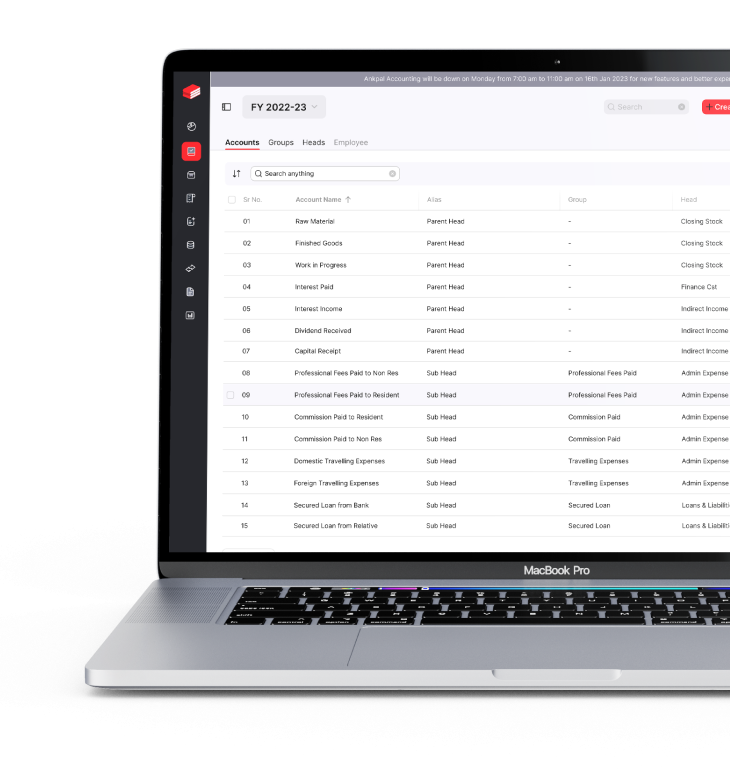
GST (Goods and Service Tax) is known to be a unified system which has been introduced in the country for replacing the various multiple taxes. GST has aimed to simplify the entire indirect taxation process by merging multiple taxes such as sales tax, service tax etc. GST is known to have different rates for various goods and services movement in the country into 4 main slabs which are - 5%, 10%, 18% and 28%.
A trader is required to register for GST if their annual turnover is above Rs. 20 lakh (or Rs. 40 lakh or Rs. 10 lakh, contingent upon the state and type of commodity). Hence, with the help of the best GST accounting software, traders can file GST in a seamless manner.
Diverse Forms Of GST Registration:
Here are the different GST registration forms which are crucial to be understood by anyone who is required to file GST:
Individual Subject to Casual Taxation:
A GST registration falls under this category, and it can be renewed or extended after its initial three-month period.
Taxpayer's composition:
You have to apply for the GST Composition Scheme in order to obtain it. You will be required to deposit an apartment under this category. Input tax credit receipts are prohibited by this category.
Taxable Non-Resident Individual:
If you offer goods to residents of India but are based outside of the country, this type of GST registration is the superior option. Similar to the category of Casual Taxable Person, you are required to deposit during the GST registration period the amount of your estimated GST due.
How To Register Online For GST
The comprehensive GST registration process that individuals must undertake in order to complete their GST registration is as follows:
Step 1:
Select the 'Register Now' link from the 'Services' tab of the GST portal at https://www.gst.gov.in.
Step 2:
Select 'New Registration' and then one needs to complete the form.
Part A:
- - Choose the option of tax payer.
- - On the next screen, fill in the email address and mobile number slots with the OTP that was sent to them, then click "Proceed."
- - You will see the Temporary Reference Number (TRN). Note the TRN (which is useful for further steps).
Part B:
- - After accessing the GST portal, select "Temporary Reference Number (TRN)" in the second step. Now enter the captcha data and the TRN number. Click "Proceed" to continue.
Step 3:
The registered mobile number and email address you gave will receive an OTP. Click "Proceed" after entering the OTP.
Step 4:
Requirements must be met in order to go to the next level, and the required documentation must be filed.
The Mentioned Files Must Be Uploaded:
- - Passport size picture.
- - Verification of the business address.
- - Examples of bank details include account numbers, bank names, bank branches, and IFSC codes.
- - Send the necessary documentation to move on to the next phase.
Documentation Required For The Applicant's PAN And GST Registration
- - Adhaar card.
- - Evidence of an incorporation certificate or business registration.
- - Promoters' and directors' confirmation of identity and address with photos.
- - Address verification for the business location; bank account statement; canceled check.
- - Board Resolution for Authorized Signatory and Authorization Letter with Digital Signature.
Penalties For Not Completing The GST Registration:
If an offender does not pay taxes or pays them in full, they will be penalized 10% of the taxes due, with a minimum penalty of Rs. 10,000 (sincere mistakes). Traders can look for the right software for GST filing and file GST timely to avoid any penalties
Conclusion:
Benefits of a regular registered business include the ability to conduct interstate commerce without limitations and the ability to claim input tax credits. Businesses that voluntarily register for GST benefit from a number of advantages, including a competitive edge over rival companies, the ability for taxpayers to claim input tax credits, simple online registration for e-commerce websites, and unrestricted interstate business.








